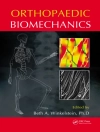Chronic deep brain stimulation (DBS) has been a rapidly evolving area of neurotherapeutics since its initial introduction for the treatment of Parkinson’s disease and essential tremor in the 1990s. For these conditions, DBS is now considered accepted therapy for patients failing to adequately respond to m- ical treatment. Since the 1990s, new clinical indications, anatomic targets, and technologies have contributed to an expanding role for DBS in the treatment of other movement disorders such as dystonia and Tourette syndrome as well as for other neurologic disorders such as epilepsy and cluster headache. Early experience has also been reported for psychiatric syndromes, such as obs- sive–compulsive disorder and depression. Experience with DBS in psychiatric disorders is very limited but is reviewed in this volume as neuropsychiatric indications are expected to grow in coming years. Because of the rapidly increasing application of DBS for neurologic and psychiatric indications and the recruitment of increasing numbers of neu- logic, neurosurgical, and psychiatric clinicians to the field, it is appropriate to provide a resource that updates the underlying scientific background, describes methodologies and standards of treatment, and provides information on new technologies essential for clinical success and to advance the field. Deep Brain Stimulation in Neurological and Psychiatric Disorders begins with reviews of the functional anatomy and physiology of motor and nonmotor aspects of the basal ganglia and their connections, which underlie the application of DBS to neurological and psychiatric disorders.
Spis treści
Overview of Deep Brain Stimulation.- Functional Anatomy and Physiology of the Basal Ganglia: Motor Functions.- Functional Anatomy and Physiology of the Basal Ganglia: Non-motor Functions.- History of the Therapeutic Use of Electricity on the Brain and the Development of Deep Brain Stimulation.- Deep Brain Stimulation: Patient Selection in Parkinson’s Disease, Other Movement Disorders, and Neuropsychiatric Disorders.- Technical Alternatives in Performing Deep Brain Stimulator Implantation.- Intra-operative Microrecording and Stimulation.- Complication Avoidance and Management in Deep Brain Stimulation Surgery.- Mechanisms of Deep Brain Stimulation.- Functional Imaging of Deep Brain Stimulation: f MRI, SPECT, and PET.- Deep Brain Stimulation in Movement Disorders.- Thalamic Deep Brain Stimulation and Essential Tremor.- Thalamic Deep Brain Stimulation for Other Tremors.- Thalamic Deep Brain Stimulation for Parkinson’s Disease Tremor.- Globus Pallidus Deep Brain Stimulation for Parkinson’s Disease.- Deep Brain Stimulation of the Subthalamic Nucleus for the Treatment of Parkinson’s Disease.- Deep Brain Stimulation of the Globus Pallidus Pars Interna and Subthalamic Nucleus in Parkinson’s Disease: Pros and Cons.- Deep Brain Stimulation in Atypical Parkinsonism.- Deep Brain Stimulation in Dystonia.- Deep Brain Stimulation in Tourette’s Syndrome.- The Role of Deep Brain Stimulation (DBS) in the Treatment of Postural Instability and Gait Disorders of Parkinson’s Disease.- Postoperative Management in Patients Undergoing Deep Brain Stimulation.- Deep Brain Stimulation Programming for Movement Disorders.- Neuropsychological Issues in Deep Brain Stimulation of Neurological and Psychiatric Disorders.- Deep Brain Stimulation Safety: MRI and Other Electromagnetic Interactions.- Deep Brain Stimulation Fault Testing.- Quality of Life and Cost Effectiveness of Deep Brain Stimulation in Movement Disorders.- Deep Brain Stimulation in Other Indications.- Deep Brain Stimulation in Depression: Background, Progress, and Key Issues.- Deep Brain Stimulation in Obsessive-Compulsive Disorder.- Deep Brain Stimulation for Medically Intractable Cluster Headache.- Deep Brain Stimulation in Epilepsy.- The Future of Deep Brain Stimulation.












